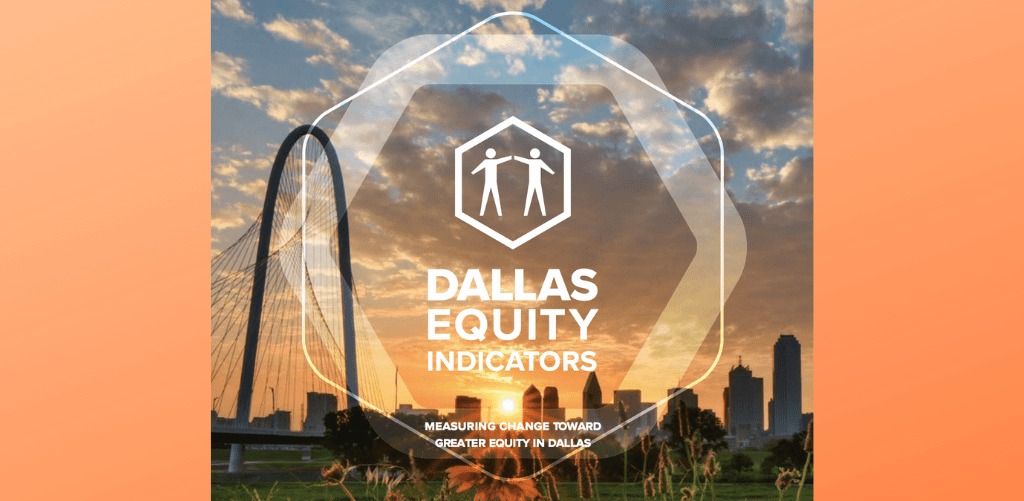Dallas is known for its growing economy and nationally recognized schools, its world-class healthcare and a true sense of community among its neighborhoods. It’s home to 1.3 million people, including nearly 1 million people of color. In spite of the city’s successes, Dallas has a long history of segregation and racial discrimination that has locked its own residents out of its prosperity. Today, local and state policies continue to reinforce those disparities. A new report shines a light on these disparities.
The Dallas Equity Indicators report is a tool for community-based groups, foundations, and local leaders to assess and address racial, ethnic, gender, and socioeconomic equity throughout the city. These indicators can be updated with new data in subsequent years to measure the effectiveness of new policies and programs in eliminating disparities.
The Dallas Equity Indicators measure disparities across 60 indicators in five areas, or themes: Economic Opportunity, Education, Neighborhoods & Infrastructure, Justice & Government, and Public Health. We compared outcomes between two groups—the most and least disadvantaged populations—to assign an equity score of 0-100 to each indicator. A low score indicates total disparity, while a score of 100 represents no disparity. The report includes scores across two years to reflect how scores—and how equity throughout the city—have changed in recent years across each indicator and theme.
The report assumes that higher scores are better for the welfare of Dallas residents overall. At the same time, the absence of a disparity score does not necessarily mean that there everyone’s outcomes are as good as they could be. For example, for smoking rates, both people of color and white residents have equally high smoking rates: the issue isn’t disparity, but the persistence of a severe health risk. By looking at both the disparity score and the raw data, these indicators help policymakers and change agents identify areas that may require focused attention, and illuminate areas where equity is improving across the city.
Key Takeaways and Theme Scores
Although the City Score for Dallas shows a 1-point improvement, the low City Score indicates a continued need for significant and persistent work to achieve equity in Dallas.
Details Behind the Scores:
- Education: The report found improvements in equity for educational attainment and student outcomes across all levels of primary education. However, it found more disparity in early education outcomes from the first year to the second. Most strikingly, Kindergarten readiness saw a negative 20 point decrease in its equity score. To make sure Dallas prepares its children for this critical stage of their education, the city should focus efforts on improving access to and quality of its early education programs.
- Justice & Government: Alarmingly, this theme had the most indicators with equity scores of 1, or almost complete disparity. In other words, Dallas’s government does not fully represent its population, and the city mirrors the national overrepresentation of Black residents in its criminal response system. These remain critical areas for Dallas to continue to providing significant attention and action.
- Neighborhoods & Infrastructure: This theme had the most positive equity scores, but it was also the only theme to see a decline in equity from the first year to the second. This is attributed primarily to housing access and affordability, and it highlights the urgency to make housing security a priority for Dallas residents.
For more information, check out the full report here.
The Dallas Equity Indicators project, a collaboration with the City University of New York’s Institute for State and Local Governance (CUNY ISLG) and the City of Dallas. The Equity Indicators report, published today, aims to understand and measure progress toward equity in the Dallas community. The report was developed in conjunction with the Resilient Dallas Strategy (RDS) as part of 100 Resilient Cities, a nationwide effort led by The Rockefeller Foundation.
CPPP Research & Planning Interns Amy Zhang and Cindy Ji contributed to this post.
